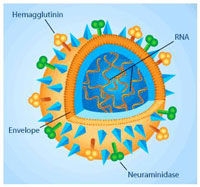Photofrin PDT reduces esophageal cancer occurrence in patients with Barrett's High Grade Dysplasia
Advertisement
Axcan Pharma Inc. disclosed new data demonstrating that Photofrin photodynamic therapy ("PDT") used in conjunction with omeprazole, a standard acid suppression therapy, reduced occurrence of esophageal cancer.
This new clinical information is based on the analysis of the 5-year follow-up observation of patients with High Grade Dysplasia ("HGD") associated with Barrett's esophagus ("BE") who were randomized in the original pivotal 2-year Phase III study conducted by Axcan which led to regulatory approval in 2003. Since HGD and the eventual possibility of developing cancer in BE are inextricably linked, the original 24-month follow-up study was continued over 5 years to confirm the reduction in cancer occurrence.
The study used multiple sites and involved 208 patients randomized (2:1) to Photofrin PDT used in conjunction with omeprazole 20mg twice-a-day, or to omeprazole alone at a dose of 20mg twice-a-day. At the end of the 5-year follow-up, results of the study confirmed that Photofrin PDT used in conjunction with omeprazole was superior to omeprazole alone in preventing the progression to cancer, with about twice the likelihood of cancer occurring in the omeprazole alone group (29%) compared to Photofrin PDT used in conjunction with omeprazole (15%). This reduction of the progression to cancer is highly statistically significant (p = 0.0272).
Most read news
Organizations
Other news from the department research and development

Get the life science industry in your inbox
By submitting this form you agree that LUMITOS AG will send you the newsletter(s) selected above by email. Your data will not be passed on to third parties. Your data will be stored and processed in accordance with our data protection regulations. LUMITOS may contact you by email for the purpose of advertising or market and opinion surveys. You can revoke your consent at any time without giving reasons to LUMITOS AG, Ernst-Augustin-Str. 2, 12489 Berlin, Germany or by e-mail at revoke@lumitos.com with effect for the future. In addition, each email contains a link to unsubscribe from the corresponding newsletter.




















































